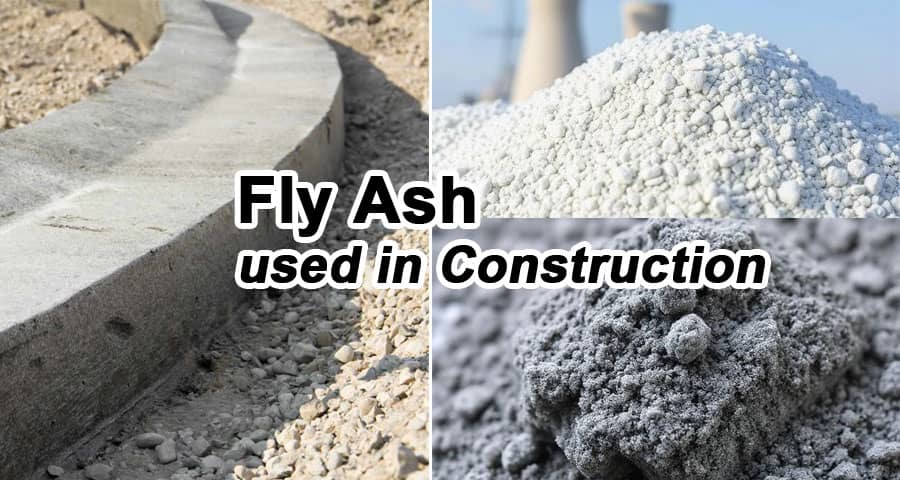What is Fly Ash, and How is it Used in Construction?

Fly ash is a fine, powdery material that is a byproduct of burning pulverized coal in thermal power plants. It consists mainly of silica, alumina, iron oxide, and calcium oxide. This byproduct, when properly processed and utilized, can significantly improve concrete strength, durability, and sustainability.
Composition and Types of Fly Ash
Fly ash is classified into two main types based on its chemical composition:
Class F Fly Ash
- Derived from bituminous and anthracite coal.
- Contains low calcium content (<10‰).
- Possesses pozzolanic properties, requiring a cementing agent such as lime or Portland cement.
- Ideal for high-performance concrete applications.
Class C Fly Ash
- Produced from lignite and sub-bituminous coal.
- Has a higher calcium content (>10‰).
- Can act as a self-cementing material without the need for additional binders.
- Used in road construction, structural concrete, and soil stabilization.
Production and Processing of Fly Ash
Fly ash is collected from electrostatic precipitators or baghouses in power plants before the gases are released into the atmosphere. It is then processed to remove impurities and ensure consistency in particle size and chemical composition.
Processing Methods
- Mechanical Processing - Grinding fly ash to enhance fineness and reactivity.
- Chemical Treatment - Enhancing pozzolanic activity through alkali activation.
- Thermal Treatment - Improving properties by subjecting fly ash to high temperatures.
Applications of Fly Ash in Construction
Fly ash is extensively used in construction due to its enhanced strength, durability, and eco-friendly properties.
1. Fly Ash in Concrete
One of the most common uses of fly ash is as a partial replacement for Portland cement in concrete production. It enhances workability, durability, and reduces the heat of hydration, leading to crack-resistant concrete.
- Benefits of Fly Ash Concrete:
- Increased strength over time.
- Reduced permeability, improving resistance to water penetration.
- Lower carbon footprint due to reduced cement consumption.
- Enhanced sulfate and alkali-silica reaction resistance.
2. Fly Ash in Brick Manufacturing
Fly ash bricks are lightweight, durable, and cost-effective. They are an eco-friendly alternative to traditional clay bricks and offer superior thermal insulation and compressive strength.
- Advantages of Fly Ash Bricks:
- Higher strength compared to red bricks.
- Less water absorption, reducing efflorescence.
- Reduced environmental impact as they eliminate the need for clay excavation.
3. Fly Ash in Road Construction
Fly ash is widely used in soil stabilization, embankments, and asphalt mixtures to improve the load-bearing capacity and longevity of roads.
- Key Uses in Road Construction:
- As a filler in asphalt pavements.
- In soil stabilization for subgrade improvement.
- For structural fills and embankments.
4. Fly Ash in Geopolymer Concrete
Geopolymer concrete is a cement-free alternative that uses fly ash as a binding agent, significantly reducing carbon emissions. This innovative material offers high strength and superior resistance to aggressive environments.
5. Fly Ash in Agriculture and Land Reclamation
Fly ash is also used in agriculture to improve soil fertility by enhancing moisture retention and nutrient availability. Additionally, it is utilized in land reclamation projects to restore degraded land and reduce erosion.
Environmental Benefits of Using Fly Ash
Fly ash utilization offers significant environmental advantages, making it an essential component of sustainable construction.
1. Reduction in CO2 Emissions
By replacing Portland cement, which is a major source of CO2 emissions, fly ash helps in reducing the carbon footprint of the construction industry.
2. Conservation of Natural Resources
Using fly ash conserves natural resources by reducing the demand for limestone, clay, and other raw materials used in cement manufacturing.
3. Waste Management and Landfill Reduction
Utilizing fly ash minimizes industrial waste disposal issues, preventing environmental hazards associated with ash dumps and reducing landfill space requirements.
4. Improved Energy Efficiency
Fly ash-based materials often exhibit better thermal insulation, reducing the energy consumption of buildings and contributing to sustainable construction practices.
Challenges and Limitations of Fly Ash Use
Despite its numerous advantages, fly ash does have some limitations:
- Variability in Quality - The composition of fly ash can vary depending on the source of coal, requiring strict quality control.
- Delayed Strength Gain - Fly ash concrete gains strength more slowly than traditional concrete, which may affect construction timelines.
- Availability Issues - The supply of high-quality fly ash depends on coal-fired power plant operations, which are declining due to renewable energy adoption.
Future Trends and Innovations in Fly Ash Utilization
The use of fly ash in construction is expected to grow with advancements in material science and sustainable construction practices. Some emerging trends include:
1. Increased Use in High-Performance Concrete
Ongoing research is enhancing the reactivity and strength of fly ash-based concrete for structural applications.
2. Development of Advanced Geopolymers
Innovative geopolymer binders using fly ash are being developed to create high-strength, eco-friendly concrete with superior durability.
3. Use in 3D Printing of Construction Materials
Fly ash is being explored as a key material for 3D-printed buildings, offering an economical and sustainable solution for rapid construction.
4. Alternative Energy Applications
Fly ash is also being researched for energy storage applications, including use in batteries and supercapacitors.
Conclusion
Fly ash is an indispensable material in modern construction, offering environmental, economic, and performance benefits. Its applications in concrete, bricks, road construction, and geopolymer materials make it a valuable resource for sustainable infrastructure development. With ongoing innovations, fly ash is set to play an even more significant role in the future of green building and circular economy practices.
Please watch the following short video for Fly Ash Used in Construction
